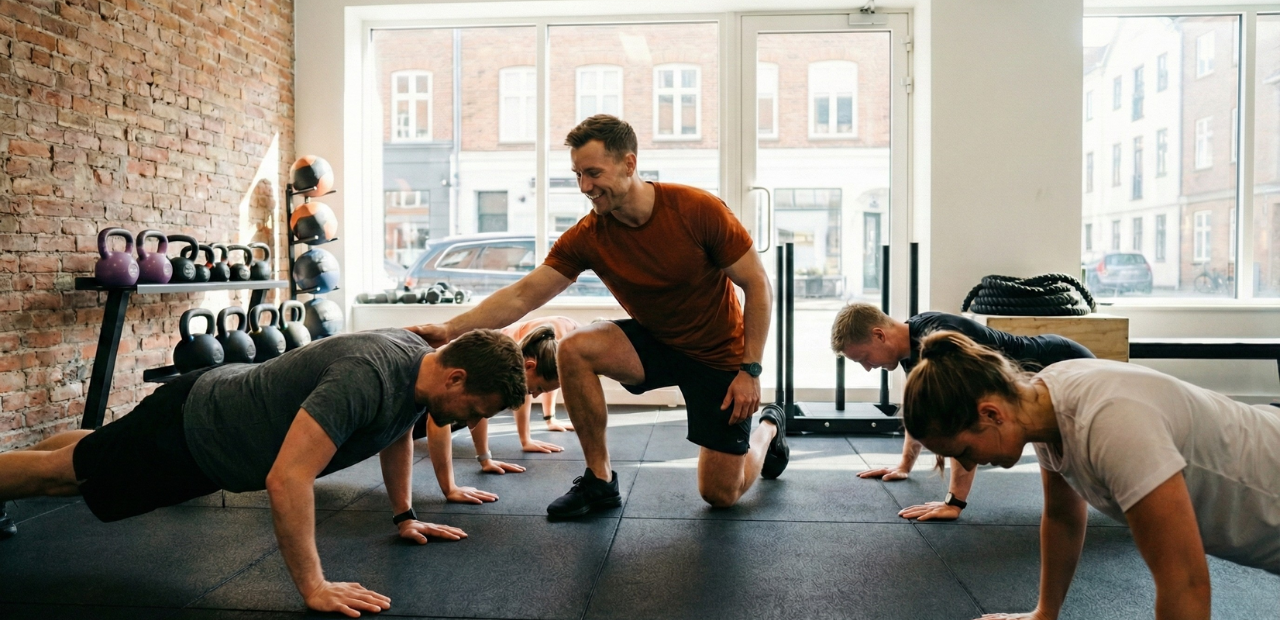In 2026, the fitness industry is experiencing a remarkable surge, with gym memberships reaching an all-time high of 184 million globally as people increasingly recognize the importance of physical exercise for both physical and mental health.
This increase from the previous year reflects a growing health consciousness among consumers and aligns with the top fitness industry trends and current sports medicine reports.
Interestingly, 80% of new health club members are millennials and Gen Z, driving a shift towards tech-integrated workouts.
As we enter the second half of the year, it’s evident that the integration of AI-driven interactions, sustainability, and a human touch in digital spaces are not just buzzwords but important marketing strategies for success.
As fitness clubs and gyms adapt to these evolving preferences, we will show you the top marketing fitness trends in the fitness world that you can take advantage of to stay on top of your competitors and keep growing your business.
1. Artificial Intelligence
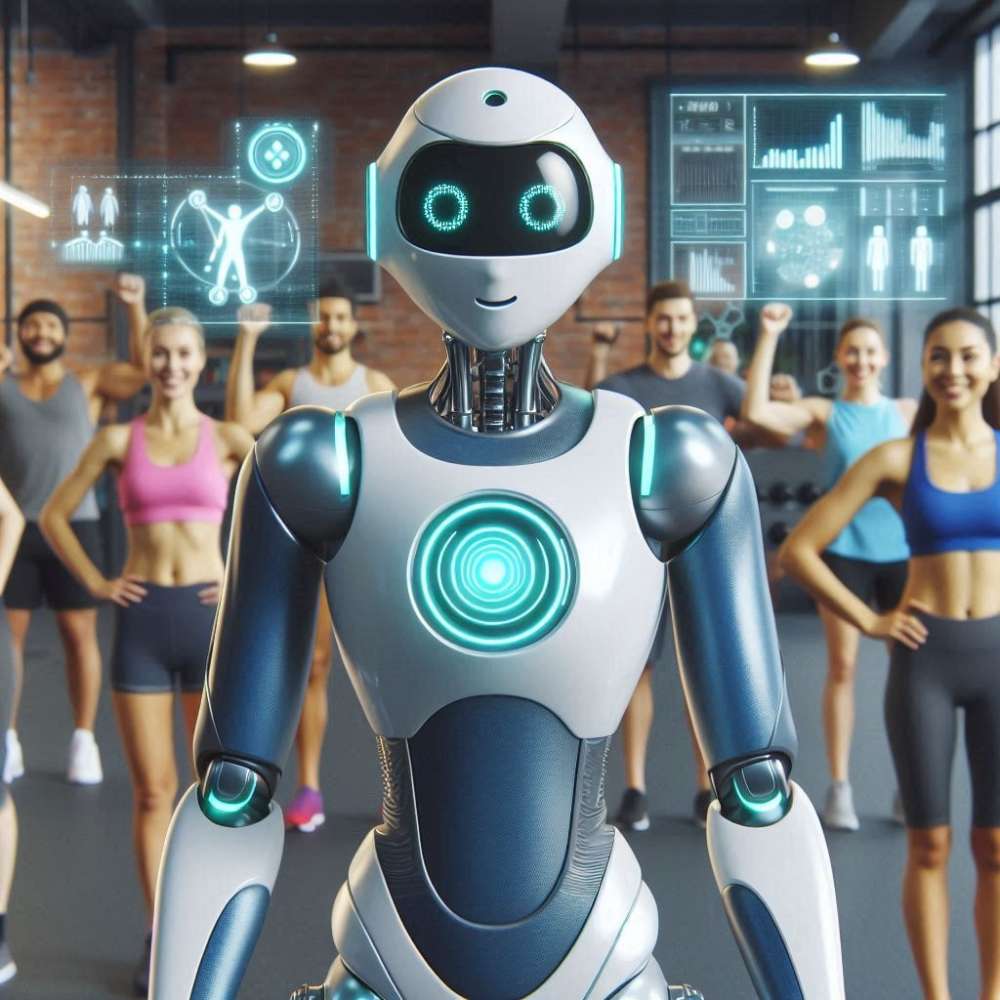
This year, many gyms are using AI as a big part of their marketing strategy. This is happening because AI technology has become more advanced and more common in our everyday lives.
Gyms are realizing that AI can help them attract new members, keep current ones interested, and even enhance their fitness programs.
They’re using AI in different ways to make working out more personalized and exciting, even incorporating trends like high-intensity interval training.
For example, some gyms are using AI to create custom workout plans for each person based on their goals, fitness levels, and preferences.
Others are using AI-powered virtual trainers that can guide people through exercises and give feedback on their form.
Gyms are even using AI to predict when equipment might need maintenance or when the gym might be busiest, so they can plan better, and some are integrating this technology into their fitness apps.
AI is also helping gyms analyze data about their members’ workout habits and progress, which lets them offer more targeted advice and encouragement.
All of these AI features are being used in marketing to show how modern and high-tech the gyms are, and to promise a more effective and personalized fitness experience.
This trend is appealing to people who like using technology and want a smarter way to work out.
Gyms are hoping that by marketing these AI-powered services, they can stand out from their competitors and attract more customers in a world where technology is becoming a bigger part of everything we do.
If you are curious about using AI for your fitness business, we recommend checking out our very own AI coach.
2. Video Marketing
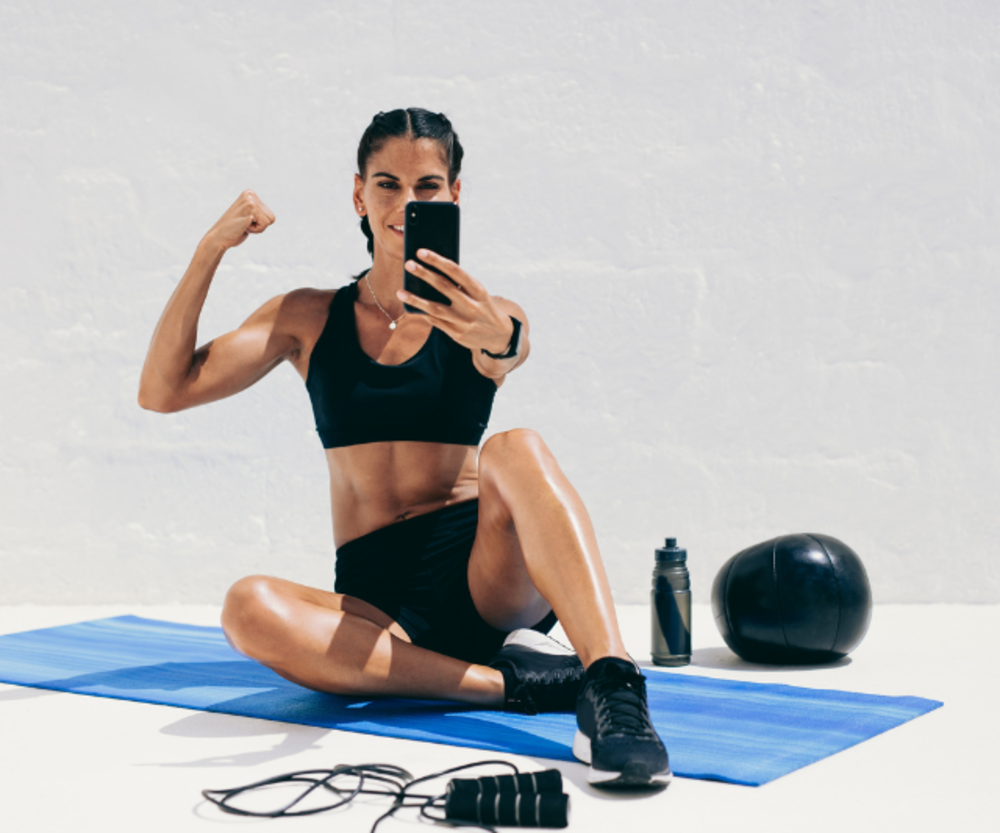
In 2026, video is becoming an even bigger deal for gym marketing.
People love watching videos, and gyms are using this to their advantage.
They’re creating all sorts of video content across various social media platforms to show off what they offer and get people excited about fitness.
Bite-sized Fitness Content
Gyms are jumping on the trend of short videos, like the ones you see on TikTok or Instagram Reels.
These quick clips, usually under a minute, are perfect for showing off workout moves, giving quick fitness tips, or giving a peek into what the gym is like.
They’re easy to watch and share, which helps spread the word about the gym.
Live Streaming
Another big trend is live streaming. Gyms are using platforms like Facebook Live or Instagram Live to broadcast workout classes or events in real time.
This lets people join in from home, giving them a taste of what the gym offers and making them feel part of the community even if they can’t be there in person.
Behind-the-Scenes

People love seeing what goes on behind the scenes, and gyms are using video to show this.
They might film staff members talking about their favorite parts of the job, or members sharing their fitness journeys.
This personal touch helps build trust and makes the gym feel more welcoming.
Video Ads
Gyms are also putting more money into video ads. These might show up before YouTube videos or in social media feeds.
They’re using these ads to show off their facilities, highlight special offers, or share success stories from members.
Video ads can be really eye-catching and memorable, which is great for getting new people interested in joining.
By using video in all these ways, gyms are making their marketing more engaging and personal.
It’s helping them connect with people better and show off what makes their gym special.
In a world where everyone’s always on their phones watching stuff, this video trend is helping gyms stay relevant and attractive to potential new members.
3. User Generated Content (UGC)
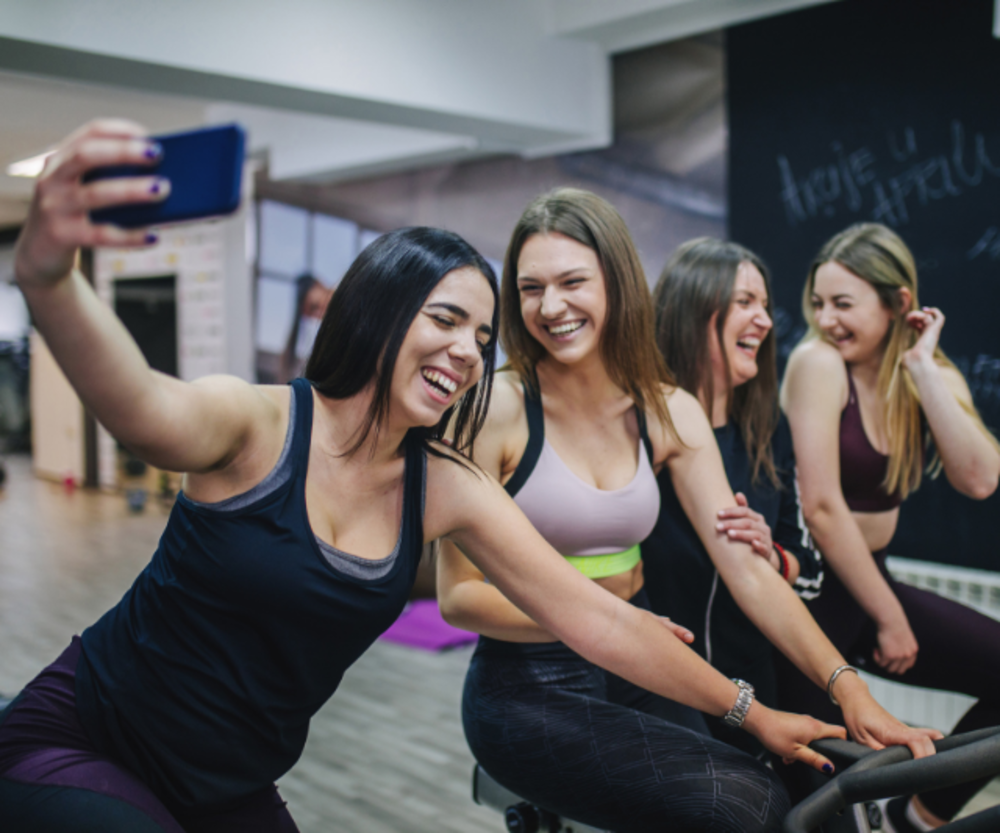
User Generated Content (UGC) is going to help gyms stand out in 2026.
UGC is all about letting your gym members do the talking - or in this case, the posting.
It’s when people who go to your gym share their own photos, videos, or stories about their fitness journey.
This trend is really taking off because it feels real and honest, which is exactly what people are looking for these days.
Real People, Real Results
One of the biggest reasons UGC is so powerful is that it shows real people getting real results.
When a gym member posts a before-and-after photo or shares a video of them crushing a personal best, it’s way more convincing than any ad the gym could make.
It’s like getting a recommendation from a friend, which we all know is worth its weight in gold.
Building a Community, One Post at a Time
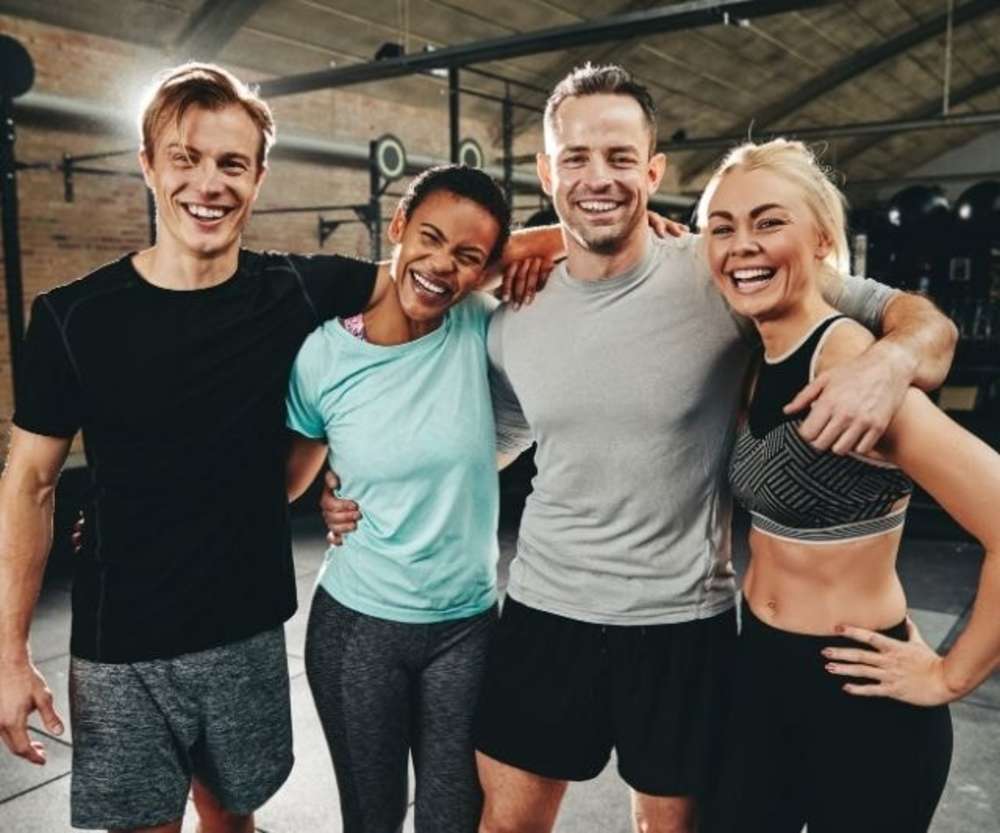
UGC isn’t just about showing off results; it’s also about building a community.
When gyms encourage their members to share their experiences, it creates a sense of belonging.
People start cheering each other on, sharing tips, and feeling like they’re part of something bigger than just a place to work out.
Cost-Effective Marketing Magic
For gym owners, UGC can also help save them money.
Instead of spending big bucks on fancy photoshoots or commercials, they’re getting a constant stream of authentic content created by their own members.
It’s not only cheaper, but it’s often more effective because it’s so genuine.
Hashtags and Challenges
Many gyms are getting creative with how they encourage UGC.
They might start a hashtag challenge, like #MyGymJourney, or run contests for the best transformation stories.
This not only gets more people sharing but also makes the whole experience fun and engaging.
Trust in the Era of Skepticism
In a time when people are pretty skeptical of advertising, UGC shines bright.
When potential new members see real people talking about their gym experiences, it builds trust in a way that traditional marketing just can’t match.
It’s like getting a behind-the-scenes look at what being a member of that gym is really like.
By embracing UGC, gyms are not just marketing their facilities; they’re showcasing their community and the real-life successes of their members.
It’s a powerful way to attract new people and keep current members motivated and engaged.
4. Influencer Marketing

In 2026, influencer marketing is shaking up the fitness space, especially for gyms.
It’s all about partnering with people who have a big following on social media to spread the word about your gym.
But it’s not just about finding someone famous - it’s about finding the right fit.
The Power of Fitness Influencers
Fitness influencers are like the popular kids of the workout world.
They’ve got tons of followers who look up to them for workout tips, diet advice, and motivation.
When these influencers talk about a gym, their followers listen.
It’s like getting a recommendation from a trusted friend but on a much bigger scale.
Here’s where it gets interesting - gyms aren’t just going after the big names. They’re also teaming up with micro-influencers.
These are people who might have fewer followers, but their audience is super engaged.
Think of those local fitness professionals who everyone in town knows and respects. Their word can carry a lot of weight in the community.
Authenticity is Key
Why is this trend so hot? Because people are tired of fake ads. They want to see real people, with real bodies, achieving real results.
When an influencer shares their genuine experience at a gym - the good, the bad, and the sweaty - it feels authentic.
And authenticity is gold in marketing.
Building Community Through Influence
The best part about influencer marketing is that it’s not just about getting new members. It’s also about building a community.
When influencers interact with a gym’s social media or show up for events, it creates a buzz.
It makes the gym feel like more than just a place to work out - it becomes a lifestyle.
By tapping into the power of influencers, gyms are finding a way to cut through the noise and connect with potential members in a way that feels personal and trustworthy.
It’s a smart move in a world where social media influence can make or break a brand.
5. Diversifying Marketing Techniques

Gyms are realizing that putting all their eggs in one marketing basket isn’t the smartest move.
This trend of marketing diversification is all about spreading out their efforts across different channels to reach more people and protect themselves from sudden changes in any one platform.
Beyond SEO
While not putting all their focus on SEO, gyms are still investing in their online presence.
They’re optimizing their websites and creating local business listings to help them show up when people search for fitness options in their area.
However, after Google’s helpful content update, many gyms are expanding beyond traditional SEO tactics.
They’re now exploring platforms like Pinterest, where they can share visually appealing workout ideas and healthy living tips.
Pinterest’s long content lifespan makes it an attractive option for ongoing visibility.
Additionally, gyms are renewing their focus on Facebook, leveraging its robust targeting options for ads and using
Facebook Groups to build community engagement. This multi-platform approach helps gyms maintain a strong online presence even as search engine algorithms evolve.
Email Marketing

Surprisingly, email marketing is making a big comeback.
Gyms are building up their email lists and sending out personalized newsletters with workout tips, success stories, and special offers.
It’s a great way to keep in touch with members and nurture leads without relying on social media algorithms.
What’s really making these emails pop is the use of eye-catching visuals.
Adding images and videos to your marketing materials will go a long way in helping your readers stay engaged with your email content.
Gyms include things like before-and-after photos, short workout demonstration videos, or even GIFs of exercises.
This visual approach not only makes the emails more attractive but also helps explain fitness concepts more clearly, keeping subscribers interested and looking forward to the next email in their inbox.
Content is Still King But on Multiple Thrones
Gyms are creating content for various platforms, not just their main social media account.
They might have a blog on their website, a podcast for fitness tips, and YouTube videos showing workout routines.
This variety helps them reach different audiences and gives members multiple ways to engage.
For inspiration on creating fitness content, read this guide here.
6. Fitness Challenges
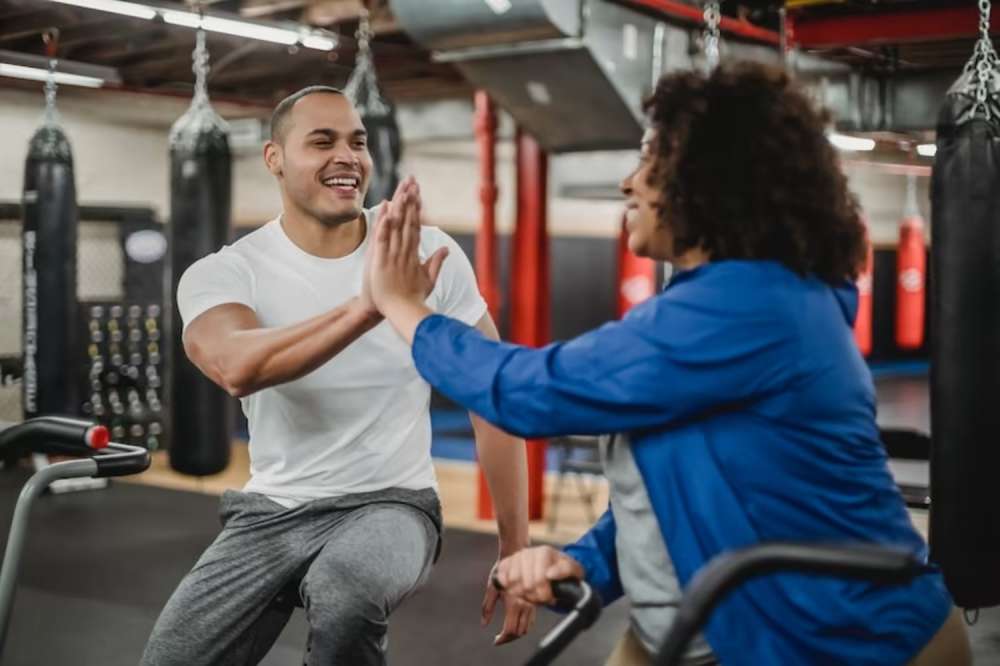
In 2026, fitness challenges are becoming a huge hit in gym marketing.
These challenges are like fun fitness adventures that gyms create to get people excited about working out and feeling part of a team.
They’re not just about exercising; they’re about setting goals, cheering each other on, and seeing real results.
Why do Challenges Work So Well?
Challenges work great because they give people a clear target to aim for.
Maybe it’s a 30-day workout streak or a goal to lift a certain weight by the end of the month.
This gives gym-goers something specific to work towards, which is way more motivating than just saying “I want to get fit.”
Plus, when you join a challenge, you’re not doing it alone.
You’re part of a group of people all trying to reach the same goal, which makes it feel more like a team effort.
Creating a Buzz and Building Community

Gyms are using these challenges to create a real buzz.
They’re posting about them on social media, sending out emails, and even creating special apps or groups where challenge participants can connect. This isn’t just about working out; it’s about building a community.
People share their progress, cheer each other on, and even make new friends. This sense of belonging keeps people coming back to the gym long after the challenge is over.
Turning Challenge Participants into Long-Term Members
The real magic of these challenges is how they can turn newcomers into loyal gym members.
When people join a challenge, they get to experience the best of what the gym offers.
They see results, make connections, and start to feel at home in the gym environment.
By the time the challenge ends, many participants are hooked and ready to sign up for full memberships.
By using fitness challenges as a marketing tool, gyms are not just promoting their services; they’re creating experiences that people want to be part of.
It’s a win-win situation: participants get motivation and results, while gyms build their community and attract new members.
7. The Use of Funnels

Gyms are getting smarter about how they turn interested people into loyal members, and that’s where fitness marketing funnels come in.
Think of a funnel as a step-by-step journey that gently guides potential customers from just being curious about fitness to actually signing up for a gym membership.
It’s like creating a friendly path that leads people right to your gym’s front door.
Hooking Interest with Free Value
Gyms are starting their funnels with something small and easy, like offering a free workout guide or a quick fitness quiz on their website.
This gets people interested without asking for too much commitment.
It’s a way of saying, “Hey, let’s start small and see if we’re a good fit for each other.”
Building Trust, One Email at a Time
Once someone shows interest by downloading that free guide or taking the quiz, gyms follow up with helpful emails.
These aren’t pushy sales messages, but friendly tips, success stories from other members, and maybe an invitation to try a free class.
It’s all about building trust and showing that the gym really cares about helping people get fit.
Offering a Taste of Success

Many gyms are now offering short-term challenges or mini-memberships as part of their funnel.
This gives people a chance to experience what the gym is like without committing to a full year. It’s like a test drive, but for fitness!
Personalized Paths to Fitness
The best part about these funnels is that they can be personalized.
If someone shows interest in weight loss, they might get different follow-up messages than someone interested in building muscle.
This personalized touch makes people feel understood and more likely to join.
From Online to In-Person
The ultimate goal of these funnels is to get people to visit the gym in person.
Many are using online booking systems for free consultations or trial classes as the final step in their funnel.
This bridges the gap between online interest and actually stepping into the gym.
If you need help with creating a funnel, we recommend checking out this guide here.
Conclusion
Fitness marketing in 2026 is all about connecting with people in meaningful ways.
Gyms are moving beyond just promoting their facilities and are focusing on creating experiences that resonate with potential members.
These new marketing approaches recognize that everyone’s fitness journey is unique and that people are looking for more than just a place to work out – they want support, community, and personalized guidance.
By embracing these innovative marketing strategies, gyms are not only adapting to changing times but are also redefining what it means to be part of a fitness community.




